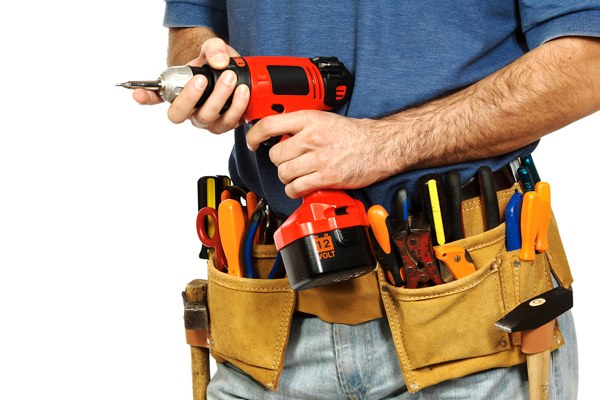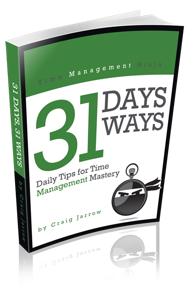What productivity tools are in your toolkit?
Are you constantly adding new ones or do you stick with the tried and true?
Better yet, how do you pick your productivity tools in the first place?
What Productivity Tools Are You Using?
One of the most often asked questions I receive is:
Which productivity tools should I use?
Sometimes people are asking for a particular tool recommendation. (The Best Todo List…)
Other times, they are asking for the best way to set up their productivity system as a whole.
Today, I want to provide a few simple guidelines to help you select the best productivity tools to get more done.
Here are 10 Simple Rules for Choosing Your Productivity Tools:
- Choose Tools You’ll Use – The most important rule in choosing your productivity tools is, “Choose tools you’ll use.” In other words, pick tools that you like and will continue to use. If you are a paper-person, then don’t pick the latest smartphone, and vice versa. You have to like your solutions or they will end up unused in a drawer somewhere.
- Define Your System – Make sure you are deliberate in choosing your tools. Name what is “IN” and what is “OUTSIDE” of your toolkit. This will prevent you from picking up that random pad of paper or extra calendar.
- Simplest Is Best – The simplest solution is always the best. Bloated, complex productivity tools only serve to slow you down. (i.e. How many steps does your todo app require to capture a task?) Additionally, complex solutions require more maintenance to be sustainable day-to-day.
- Your Tools Must Be With You – It is easier than ever to carry your tools and information with you. Make sure that the productivity tools you select are with you at all times. You can’t record appointments if that desk calendar is back in the office. You can’t look at your todo list if it is written on the Post-It at home.
- Gadgets Won’t Save You – Don’t assume that the latest shiny gadget is going to suddenly change your productivity. Gadgets get work done, but they only serve to amplify the habits you already have. (See #1 and 3.)
- Cost Doesn’t Make Them More Effective – The cost of your productivity tools doesn’t determine their effectiveness. Some people are more effective with a $1 pack of notecards than with an $800 smartphone.
- Stick With Your Tools – When you find tools that work, stick with them. Those who constantly hop to the latest new tool, usually end up wasting more time in the switch than they end up saving.
- The Right Tool for the Job – Always choose productivity tools that are suited to the task at hand. Don’t write appointments in your notebook when they should go directly on your calendar.
- Have a Complete Set – Ensure that your toolkit is complete. Do you have a tool for each type of task that you might encounter? (Hint: The tool most often missing from individual’s toolsets is a single place to keep notes.)
- The Power of 1 – The corollary of Rule #9 is that you only need one of each type of tool for a particular task. Follow the Power of 1, and avoid multiple calendars, todo lists, and notebooks. This will avoid searching several locations when you need to find a piece of information.
Choose Your productivity Tools
Choosing your productivity tools is an important task in itself.
Your productivity toolkit is the foundation that helps you get your work done.
Make sure you follow these 10 rules to have the most effective set of solutions at your fingertips.
And of course, always choose tools you’ll use.
Question: How do you choose your productivity tools?

 I am the author of Time Management Ninja and help individuals and companies reclaim their time to be more productive. As well, I am the author of the book
I am the author of Time Management Ninja and help individuals and companies reclaim their time to be more productive. As well, I am the author of the book 

I use Google calendar in conjunction with my work calendar (outlook) which then syncs with my android phone calendar. I have to ‘invite’ myself from my work calendar as the work system won’t allow me to automatically sync with external calendars and it’s a bit of a pain but works better than anything else for me at the moment. Rather than focusing too much on ‘one tool’ when it comes to my calendars I try to focus on just making sure I enter the calendar booking just the one time across the three tools.
In terms of taking notes etc I have a paper ‘scratch pad’ near my pc/laptop which can be an A4 pad or a large post-it note, whichever’s nearest. For going to meetings I usually take a tiny A6 paper notepad (it always gets a laugh from those who come with their big leather bound hardback A4 notebooks) and another thing I use an old Olympus digital voice recorder (you can get them for £7 or less off ebay now). I do a ‘voice dump’ once a week from that. Very good for catching random ideas and the odd rant! I sometimes use it for recording ‘corridor jobs’ when people stop you in the middle of nowhere and ask you to do something for them and there’s no pen and paper around.
My really most favouritist tools though are my diary/notebooks. I have 13 of these set up at the moment – plain unlined A5 sized notebooks that cost £2 from Asda and I do spider diagrams in these and then colour them in with coloured pencils. Very good for reflective thinking and idea generation. One I use most is the ‘reading diary’ – I do in depth reading of non-fiction books; convert their main points into spider/mind maps and then squeeze the value out of those notes.
Every now and again I’ll test out any new tools/methods and add something permanent to my ‘kit’. I follow the GTD methodology but add bits on here and there.
Craig, thanks for this post; I guess the KISS principle still holds true (keep it simple, etc.)- while I have a workflow that integrates a lot of different tools, it works for me and is flexible enough to get things done.
Thx, Mike. 🙂
Good to hear from you!
Fantastic post, I’ve already forwarded it on to a few clients. Information is only useful if you can access it. I won’t use a new app/program, no matter how great it might be, if it doesn’t sync to all of my devices.
Thx, Mike.
Sync is a big deal for me when choosing a new tool.
Here are some that I use…
https://timemanagementninja.com/2012/12/12-apps-to-effortlessly-keep-your-life-in-sync/
Craig, I love your first tip: Choose tools you’ll use. I’ve grabbed tools thinking I’ll use them because someone else was and I never got around to using them or found they didn’t fit me. It’s crucial the tool fits or you won’t use it.
Craig,
I really like the list that you compiled. I think you could sum it all up with, “Use the tool that most effectively and efficiently helps you to get your job done in a way that is comfortable to you.” There are too many people that have to have the latest gadget only because it is the latest gadget. They lose their focus on getting the job done and their efficiency plummets. To have real success, you need to have the right tool for the right job, not just the latest and greatest gadget because it is shiny. Thank you for putting together this great list!
I’d really put #2 as #1, and that is where you should spend a lot of time. You should not be even thinking about choosing any tool until you define your processes for task/time management. There are way too many tools that promise to solve time management issues.
May I recommend http://pozzr.com/ too?